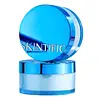What's inside
What's inside
 Key Ingredients
Key Ingredients

 Benefits
Benefits

 Concerns
Concerns

 Ingredients Side-by-side
Ingredients Side-by-side

Silica
AbrasiveTalc
AbrasiveCI 77891
Cosmetic ColorantSynthetic Fluorphlogopite
Vinyl Dimethicone/Methicone Silsesquioxane Crosspolymer
CI 77492
Cosmetic ColorantDimethicone
EmollientCI 77491
Cosmetic ColorantCaprylyl Glycol
EmollientPhenoxyethanol
PreservativeEthylhexylglycerin
Skin ConditioningDimethiconol
EmollientCI 77499
Cosmetic ColorantLauroyl Lysine
Skin ConditioningTriethoxycaprylylsilane
Hydrolyzed Hyaluronic Acid
HumectantHydrogenated Lecithin
EmulsifyingTocopherol
AntioxidantSilica, Talc, CI 77891, Synthetic Fluorphlogopite, Vinyl Dimethicone/Methicone Silsesquioxane Crosspolymer, CI 77492, Dimethicone, CI 77491, Caprylyl Glycol, Phenoxyethanol, Ethylhexylglycerin, Dimethiconol, CI 77499, Lauroyl Lysine, Triethoxycaprylylsilane, Hydrolyzed Hyaluronic Acid, Hydrogenated Lecithin, Tocopherol
Silica
AbrasiveAluminum Starch Octenylsuccinate
AbsorbentMica
Cosmetic ColorantHydrogenated Polyisobutene
EmollientPhenoxyethanol
PreservativeEthylhexylglycerin
Skin ConditioningHdi/Trimethylol Hexyllactone Crosspolymer
Boron Nitride
AbsorbentNylon-12
Butylene Glycol
HumectantTriethoxycaprylylsilane
Water
Skin ConditioningGlycerin
HumectantAnthemis Nobilis Flower Extract
MaskingHydroxyacetophenone
AntioxidantCentella Asiatica Extract
CleansingSalicylic Acid
MaskingHamamelis Virginiana Leaf Extract
Skin ConditioningCamellia Sinensis Leaf Powder
ExfoliatingCI 77891
Cosmetic ColorantCI 77492
Cosmetic ColorantCI 77491
Cosmetic ColorantCI 77499
Cosmetic ColorantSilica, Aluminum Starch Octenylsuccinate, Mica, Hydrogenated Polyisobutene, Phenoxyethanol, Ethylhexylglycerin, Hdi/Trimethylol Hexyllactone Crosspolymer, Boron Nitride, Nylon-12, Butylene Glycol, Triethoxycaprylylsilane, Water, Glycerin, Anthemis Nobilis Flower Extract, Hydroxyacetophenone, Centella Asiatica Extract, Salicylic Acid, Hamamelis Virginiana Leaf Extract, Camellia Sinensis Leaf Powder, CI 77891, CI 77492, CI 77491, CI 77499
Ingredients Explained
These ingredients are found in both products.
Ingredients higher up in an ingredient list are typically present in a larger amount.
Ci 77491 is also hydrated iron III oxide. It's sole purpose is to give a red/pink hue to products.
Iron III oxides are classified as inorganic chemicals for coloring.
Synthetically created Ci 77491 is considered safer than those naturally found. This is because the synthetically created version may contain less impurities. Iron oxides are generally non-toxic and non-allergenic.
Learn more about CI 77491Ci 77492 is also hydrated iron III oxide. It's sole purpose is to give a yellow hue to products.
Iron III oxides are classified as inorganic chemicals for coloring.
Synthetically created Ci 77492 is considered safer than those naturally found. This is because the synthetically created version may contain less impurities. Iron oxides are generally non-toxic and non-allergenic.
Learn more about CI 77492Ci 77499 is also hydrated iron III oxide. It is created from mixing red and black iron oxides. This helps give shades of darkness to a product.
Iron III oxides are classified as inorganic chemicals for coloring.
Ci 77891 is a white pigment from Titanium dioxide. It is naturally found in minerals such as rutile and ilmenite.
It's main function is to add a white color to cosmetics. It can also be mixed with other colors to create different shades.
Ci 77891 is commonly found in sunscreens due to its ability to block UV rays.
Learn more about CI 77891Ethylhexylglycerin (we can't pronounce this either) is commonly used as a preservative and skin softener. It is derived from glyceryl.
You might see Ethylhexylglycerin often paired with other preservatives such as phenoxyethanol. Ethylhexylglycerin has been found to increase the effectiveness of these other preservatives.
Phenoxyethanol is a preservative that has germicide, antimicrobial, and aromatic properties. Studies show that phenoxyethanol can prevent microbial growth. By itself, it has a scent that is similar to that of a rose.
It's often used in formulations along with Caprylyl Glycol to preserve the shelf life of products.
Silica, also known as silicon dioxide, is a naturally occurring mineral. It is used as a fine, spherical, and porous powder in cosmetics.
Though it has exfoliant properties, the function of silica varies depending on the product.
The unique structure of silica enhances the spreadability and adds smoothness, making it a great texture enhancer.
It is also used as an active carrier, emulsifier, and mattifier due to its ability to absorb excess oil.
In some products, tiny microneedles called spicules are made from silica or hydrolyzed sponge. When you rub them in, they lightly polish away dead skin layers and enhance the penetration of active ingredients.
Learn more about SilicaTriethoxycaprylylsilane is a silicone used to bind and stabilize ingredients.
As an emulsifier, it helps prevent ingredients from separating. This can help elongate the shelf life of products.
Triethoxycaprylylsilane is often used to coat mineral sunscreens ingredients to help give a better feel. It also helps reduce oxidative stress in sunscreens.
Learn more about Triethoxycaprylylsilane